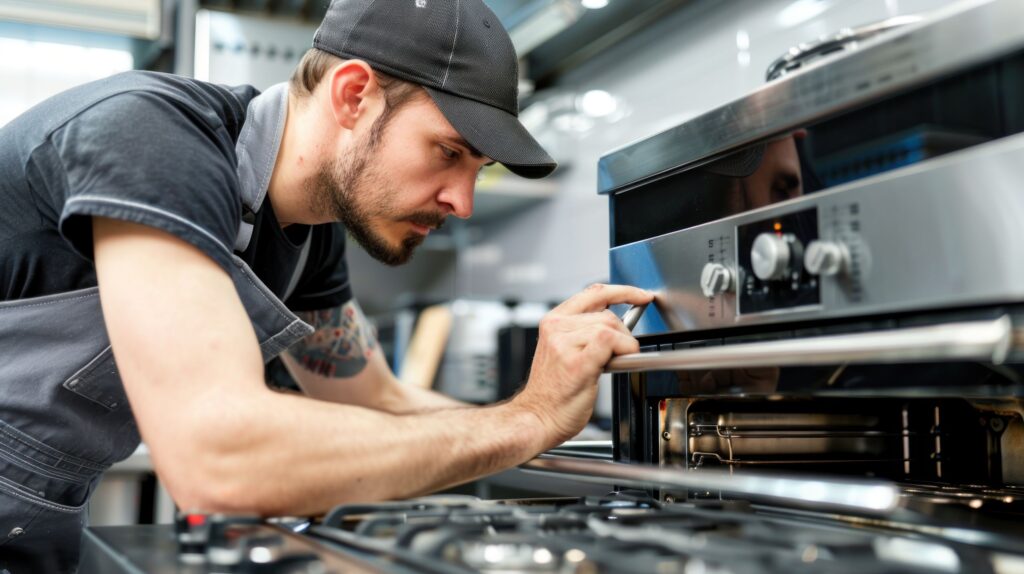In today’s commercial kitchen, equipment failure can disrupt operations, leading to lost revenue and dissatisfied customers. Minimizing downtime during repairs is crucial to maintaining efficiency and profitability. Proper planning, preventive maintenance, and quick response strategies can significantly reduce interruptions when critical appliances malfunction.
Read on to learn how to minimize downtime during commercial kitchen equipment repairs.
Contents
- 1 Understand the Importance of Preventive Maintenance
- 2 Partner with Reliable Repair Services
- 3 Keep Essential Spare Parts in Stock
- 4 Train Staff for Basic Troubleshooting
- 5 Implement a Backup Plan
- 6 Schedule Repairs During Off-Peak Hours
- 7 Leverage Technology for Remote Diagnostics
- 8 Document Equipment History
- 9 Conclusion
Understand the Importance of Preventive Maintenance
Preventive maintenance is essential for avoiding costly and disruptive equipment failures in commercial kitchens. By conducting routine inspections and servicing, technicians can spot early warning signs, such as refrigerant leaks, compressor issues, or deteriorating gaskets, before they can lead to major malfunctions. Working with an expert specializing in commercial refrigerator repair, for example, can help address minor problems before they cause a full breakdown.
Hence, keeping a detailed maintenance log can ensure consistent monitoring of all components, extend equipment lifespan, and reduce emergency repairs. This proactive approach can minimize downtime, lower repair costs, and maintain operational efficiency.
Partner with Reliable Repair Services
A reliable repair service is crucial for minimizing disruptions in a commercial kitchen. Partnering with experienced technicians specializing in commercial equipment can ensure swift and accurate diagnostics, leading to faster resolution. As such, it’s best to prioritize service providers that offer 24/7 emergency support and guaranteed response times to address urgent breakdowns immediately.
Furthermore, reputable companies can maintain an inventory of authentic OEM parts, preventing prolonged delays due to part shortages or mismatched components. Establishing a long-term relationship with a trusted repair provider can help enhance efficiency, reduce downtime, and ensure consistent equipment performance when it matters most.
Keep Essential Spare Parts in Stock
Stocking essential spare parts is a strategic way to reduce equipment downtime in commercial kitchens. Frequently replaced components, including fuses, thermostats, motor belts, gaskets, and electrical relays, should be stored onsite for immediate access. This preparedness can help prevent extended delays caused by supply chain issues or shipping times, enabling technicians to perform repairs efficiently during their first service call.
A well-organized inventory system, with parts labeled and stored properly, can also ensure quick identification and replacement, keeping kitchen operations running smoothly with minimal disruption. Regularly reviewing and updating the spare parts list based on equipment usage patterns can further optimize this proactive approach.
Train Staff for Basic Troubleshooting
Equipping kitchen staff with fundamental troubleshooting skills can create a valuable first response team for equipment issues. Frontline workers should be trained to identify early warning signs such as irregular mechanical sounds, inconsistent heating/cooling patterns, or flashing error indicators. This awareness can enable staff to perform simple interventions like resetting circuit breakers, clearing jammed components, or adjusting thermostat settings before problems worsen.
Such proactive measures can typically restore functionality without professional intervention, allowing staff to provide technicians with precise symptom descriptions if repairs are needed. This knowledge-based approach can help reduce emergency service calls while maintaining operational continuity.
Implement a Backup Plan
A well-structured contingency plan is indispensable for maintaining seamless kitchen operations during equipment failures. Strategic investments in backup appliances like compact refrigeration units, secondary cooking stations, or portable holding kitchen cabinets can provide immediate alternatives when primary equipment goes down.
For operations without spare equipment, developing reciprocal agreements with neighboring commercial kitchens for emergency equipment sharing can serve as a practical stopgap. These proactive measures can prevent service interruptions, protect food safety standards, and preserve customer satisfaction while awaiting permanent repairs. Additionally, documented emergency protocols can ensure staff can quickly implement alternative workflows without hesitation during high-pressure situations.
Schedule Repairs During Off-Peak Hours

Strategic scheduling of equipment repairs during off-peak hours can significantly reduce operational disruptions in commercial kitchens. The optimal windows for service work typically occur before breakfast service, after dinner rush, or during mid-afternoon lulls between lunch and dinner. Proactive coordination with repair technicians to book these time slots can also ensure minimal interference with food production schedules.
Additionally, it’s important to establish clear communication protocols with service providers about preferred maintenance times and maintain a calendar of upcoming service appointments to align repairs with the kitchen’s slowest periods, thus protecting revenue-generating meal services.
Leverage Technology for Remote Diagnostics
The integration of IoT-enabled commercial kitchen equipment with remote monitoring systems can revolutionize maintenance efficiency. These smart kitchen appliances can continuously track performance metrics like temperature consistency, energy consumption, and component wear, sending real-time alerts when parameters deviate from optimal ranges. This predictive technology enables service technicians to assess issues digitally before dispatch, ensuring they arrive fully prepared with specific replacement parts and tools.
By transforming reactive repairs into preemptive interventions, remote diagnostics can slash equipment downtime while preventing catastrophic failures by detecting developing issues early.
Document Equipment History
Maintaining comprehensive service records can create an invaluable knowledge base for commercial kitchen operations. Detailed logs should document every repair, maintenance session, and part replacement, including dates, technician observations, and solutions implemented. This historical data enables service providers to quickly recognize patterns, such as frequent compressor failures or recurring thermostat malfunctions, allowing them to address root causes rather than just symptoms.
Digital record-keeping systems can enhance accessibility, enabling instant retrieval of equipment histories during service calls. Such organized documentation can lead to more accurate diagnoses, targeted repairs, and significantly reduced equipment downtime that could disrupt kitchen operations.
Conclusion
Reducing downtime during commercial kitchen equipment repairs requires a proactive approach. Preventive maintenance, reliable service partnerships, staff training, and strategic planning to keep operations running smoothly. By implementing these strategies, businesses can ensure minimal disruption and maintain high service standards even when repairs are necessary.

